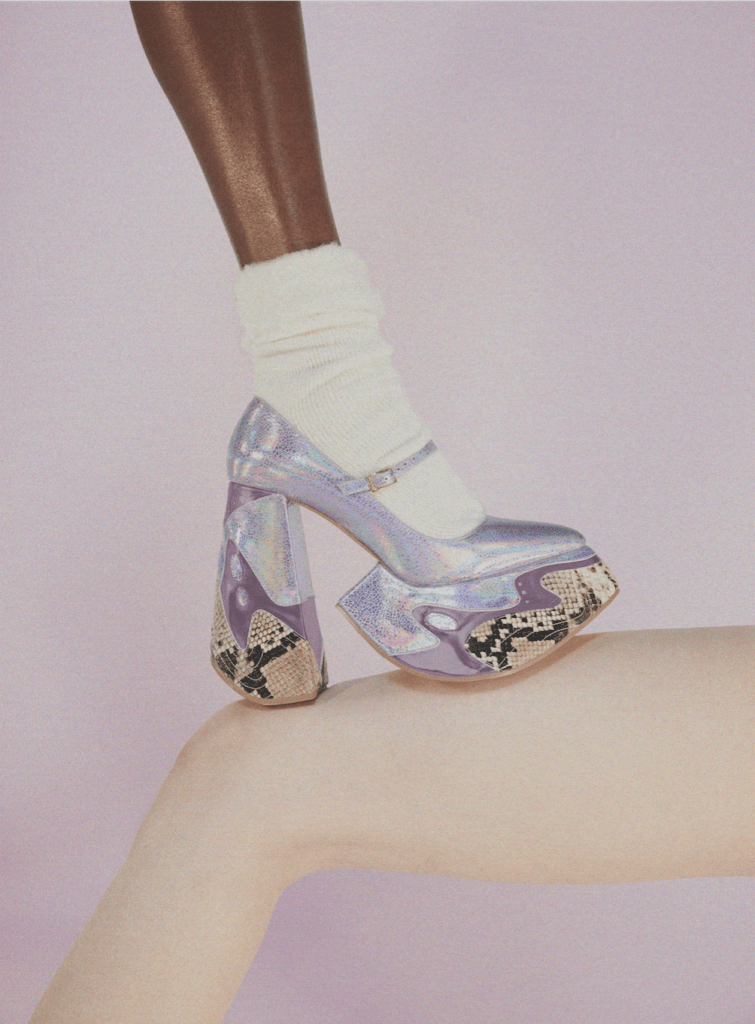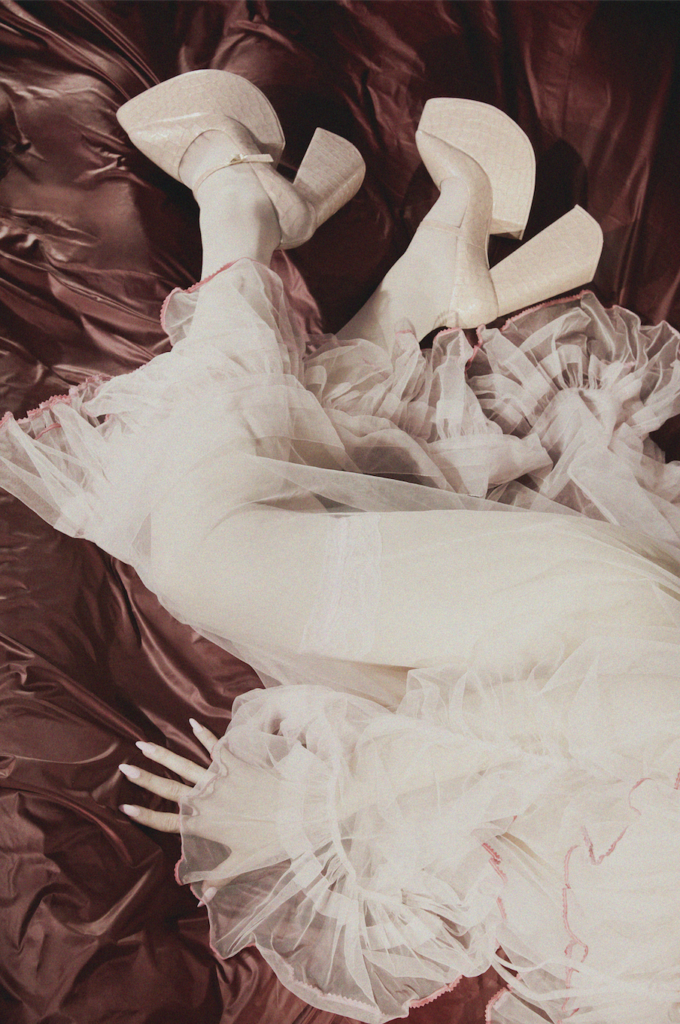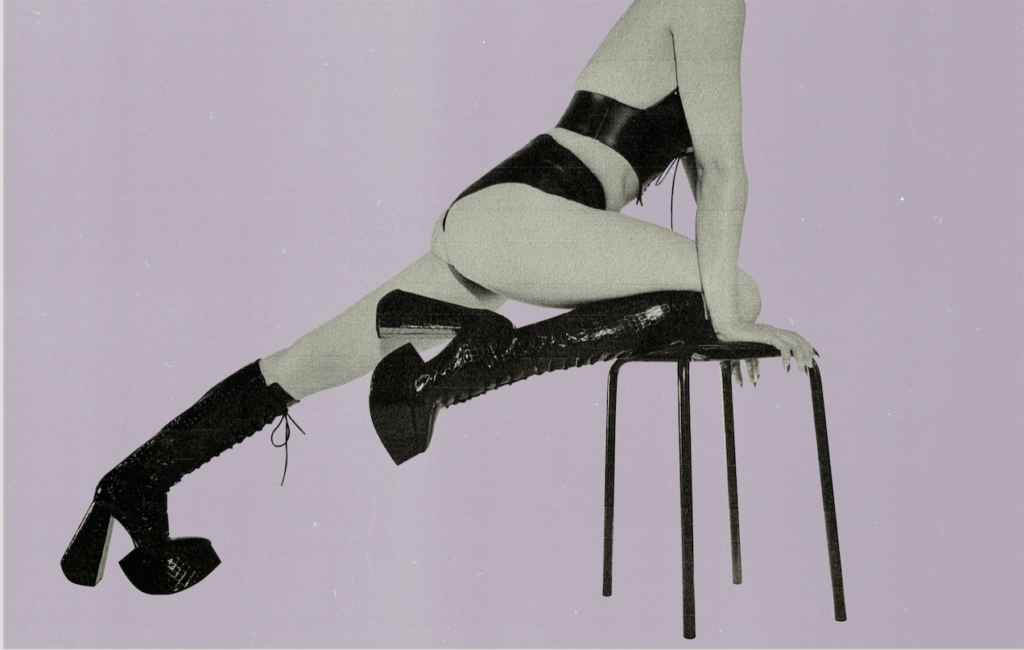Kira Goodey, originally from Perth, Western Australia, transitioned from a costume maker to a bespoke shoemaker in London, earning a name for herself for her audacious designs. A graduate of London’s esteemed Royal College of Arts, Kira honed her skills working as a designer for some of the most prominent names in the fashion and footwear industry. Her experiences paved the way for the creation of her eponymous footwear brand, where she continues to weave her magic into every pair she designs.
At the heart of Kira’s practice lies a profound love for the craft, a sentiment that goes beyond the runway. She is not only a creator but a mentor, sharing her expertise with the next generation of designers through shoemaking classes. In her hands, shoemaking becomes an art form, an expression of creativity that transcends the boundaries of conventional design.
With her brand’s latest ready-to-wear collection, Genderless Heels, Goodey started extending her designs to a broader audience. Join us as we step into the studio of Kira Goodey, exploring the artistry, passion, and dedication that have established her as a unique voice in the world of fashion. Discover the stories behind the towering creations and the philosophy that drives Kira to make a statement with every step.
Can you tell me more about your background and how you got into designing shoes?
I started more in womenswear. I have always been obsessed with making things since a young age and always instinctively knew I wanted to do something in design. Later down the line, I came across this bespoke fetish shoe cobbler, and I became very curious about the idea of making shoes so I begged the artist to let me be his apprentice. I loved everything about the process of shoe-making from day one, This experience resonates with so many things I love: the fashion, the expression, the sculpture, while still being durable and practical, also the idea of finding the perfect balance between fashion and function. I was hooked into the world of footwear design and from then on, that is what I’ve been doing in the past 10 years.

Photo credit: Kira Goodey
When I first started, I worked with bespoke clients who were very diverse – they came in all shapes and sizes. The clients who have larger sizes struggle to find shoes that work for them, shoes that are equally exciting, there really is nothing available for them. The idea of doing a shoe that covers all sizes from 33-36EU is very uncommon when you look at the offers available in the current market, especially for smaller brands. So my brand really fills in the gaps so that everybody in all foot sizes can fully express themselves the way they deserve.
What is your guiding design principle?
Fashion is only clothing until someone puts it on. It’s how someone wears something, what it says about them and the journey they take with it. It’s not just a piece of art sitting on a shelf to just look at. That’s what really important to me. For me it’s more important to look at a shoe not just as art but as a working functional shoe; they have to work, and if they don’t work, there is no point to it. It’s the idea of bridging engineering and artistic challenge.

Photo credit: Kira Goodey
Where do you get motivation and inspiration from for your work?
Back then, in the pre-pandemic world, going to the club, I was always inspired by people expressing themselves in those scenes: perfect make-up, incredible hair, and wearing outfits that tell stories. Then you look at their shoes and you wish they would be able to be as expressive on their feet as well. What inspired my work is when I walk out of the street of East London, with the colour and the contrast, how people style their shops, the sights, the smell, the lifestyle and culture… Going to a museum and seeing these divine objects that are 100 years old and the immaculate craftsmanship, the attention to detail and the love that poured into the work.
What was most important for you when working on this project and what were the biggest challenges you faced?
I’ve been working in the industry of bigger luxury brands and I learned that the biggest challenge is how the whole fashion industry is set up on how shoes are bought. So when you’re a shoe brand and you show a shoe collection to buyers, the buyers select what goes on the market. So even if you offer them a collection that comes in full sizes, they only select a limited portion of specific sizes that are sold the most in order to meet their bottom line. This is the reality of retailers and the pressure that they have. They have to take the safest route and only invest in what will drive their revenue. This means that for me selling to retailers and wholesalers with uncommon sizes is out of the question. So with the ethos for my brand to make shoes accessible to everyone, I could only do it directly, in which direct-to-consumer business for independent brands is extremely challenging. This ultimately became a problem due to the lack of offerings in uncommon sizes.
Which designer in the footwear industry do you most admire and why?
The one that I always look up to is Andrea Prussia, from the early 20th century, who designed the most divine, surreal, sculptural shoes. For me, this is the type of designer I wanted to be, where the craft is miraculous and concept is strange and exciting and the final piece is so beautiful.

Photo credit: Kira Goodey
Can you tell me more about your design process?
So I tend to be quite material-driven. I’m quite hands-on with my process with the influence of the shoe-making background. A lot of my designs are dictated by what the material does. I work with leather a lot, it’s the byproduct of the meat industry, it’s so strong, versatile and so good for your feet and I love the techniques leather can achieve. So I would start by mixing materials and play with different techniques, then piece them together into the collection. I love working by hand to understand its technicality, then getting into sketching and going back to sample making. I tend to work on the first sample myself before working with the factory because I have this process of realizing and designing through making. My background in shoe-making continues to influence me with the way I work today.
What would be your dream design project?
I love making collections and being able to be financially able to do this forever is the dream. I am a huge art fan: at every place I visit, I always go to art museums and different galleries which keep me nourished. If I had all the resources in the world, I would love to have a gallery and create this experiential space for people to fully express themselves; dressed up from head to toe in my designs and immerse themselves completely in this world that has the feel of a semi-real and semi-surreal ecosystem.
What do you wish to see more of in the footwear industry?
More fantasy, more drama. To see more designs that are unapologetic and not afraid to make their own status quo. I would like to see more small brands doing niche creative things, more innovative, with all the love and passion, instead of looking at the bottom line and only designing what sells for the masses. And I hope that people and social media really push to nurture these small brands to continue breaking ground and pushing boundaries.
How has the pandemic affected your work and design process?
The pandemic has hit the supply chain really hard. Getting things you want and getting the things on time has become slower and more expensive. It definitely causes every brand to rethink how they build a business, how they communicate and how they need to adapt constantly. You have to be quick on your feet because you can no longer able to stick to how the industry is run and how it has been done because it doesn’t work that way anymore. You need to be more patient, go with the flow, be innovative with the constraints that come with it and make the most of what you can access. You may look at this as a downside, but since everything is in flux, you could actually take the whole industry in another direction; to be more sustainable, more ethical, kinder, nicer and simply more ‘human-focused’. I can really see positive change coming as a result of the pandemic.
What does this award mean to you personally?
I’m really over the moon, it means so much. It’s been a lot of work on my own, behind closed doors, hoping that I’m doing the right thing and so to put it out there and get the recognition this way really gives me the confidence and optimism that even though this journey is hard, I’m taking the right direction and that people see the value in my brand and motivated me to not give up. I’m very grateful.

Photo credit: Kira Goodey










